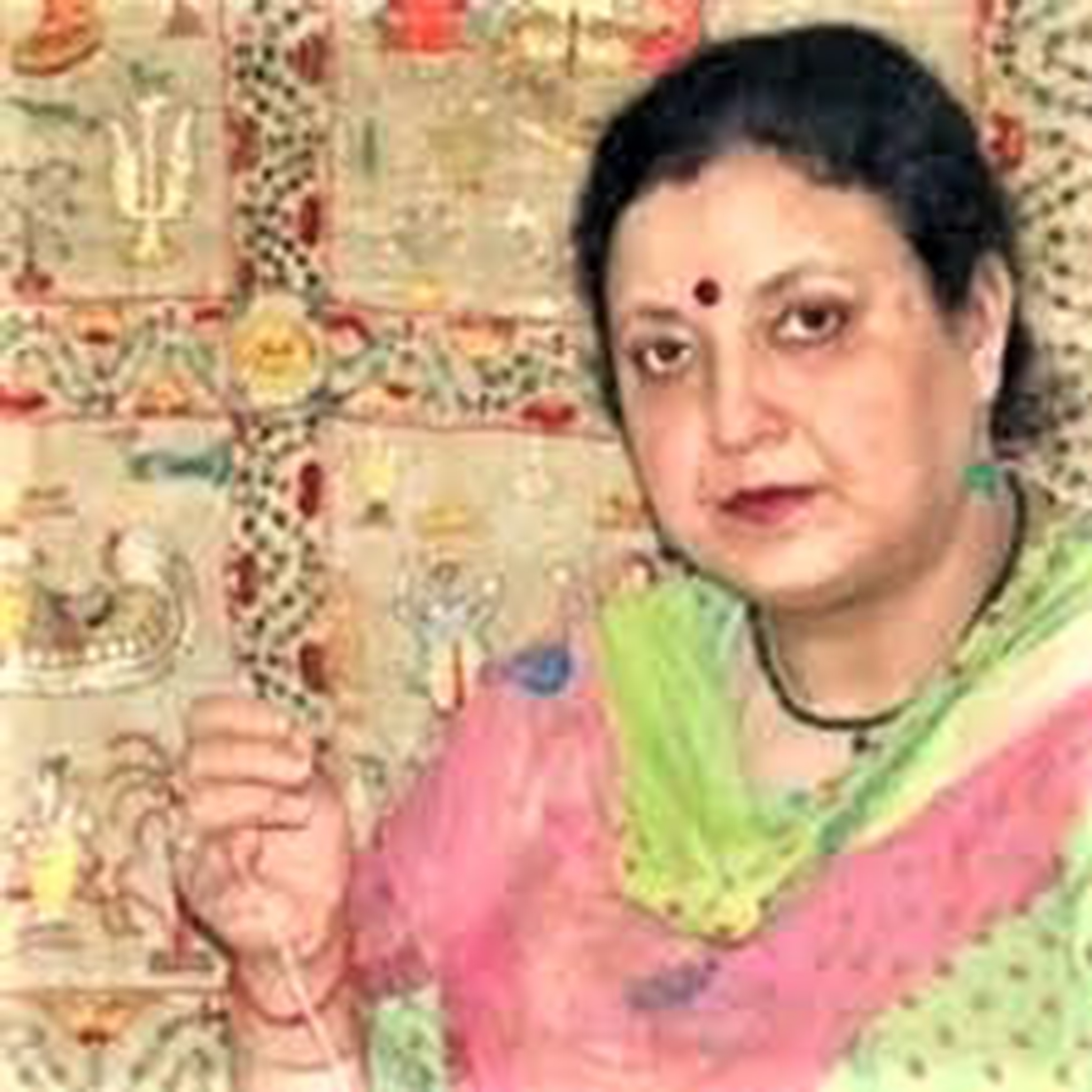Reviving the Chamba rumal has been my labour of love
IT was in the 1980s when I had put up an exhibition of my works on Chamba rumal at the Crafts Museum, New Delhi. Dr Jyotindra Jain, who was the curator of the museum, appreciated my work and also showed me some beautiful old Chamba rumals among the museum’s exhibits. Some of these had become very old and had worn out. He mentioned that though the craft was once popular, very few people were now making the Chamba rumal, which was mainly used as a decoration piece or to cover thaals at weddings. With not many craftspersons left to pursue this craft, soon this legacy would be lost forever. He asked me if I could do something different with the rumal while keeping its essence alive. He suggested that with my expertise, I should try to create it on silk and tussar, instead of the regular muslin cloth.
This interaction with him opened up a whole new world of possibilities for me. For the first time, the realisation dawned upon me that this precious heritage needed to be preserved as well as brought out in the open to the world so that more and more people know about this and take up this craft. A new me returned home to Chamba, rejuvenated with fervour to do something much more for the craft which hardly had any takers, despite once having received the patronage of the royalty.
My memory takes me back to the 1960s when as a 16-year-old I entered the well-known Vakil family as a bride. In this family, art thrived. My husband, MS Vakil, as well as his cousin, Dev Badotra, had studied at the JJ School of Arts, while my father-in-law, who was a well-established doctor in the region, was an art lover. Looking at my interest in knitting, embroidery and stitching, my family encouraged me to pursue my hobby. At that time, Chamba rumal was a dying art. Very few people were making efforts to keep alive this legacy. One such person was Maheshwari Devi, who had started a Chamba Rumal Centre in Chamba. She had even got the President’s award from Dr Rajendra Prasad in 1965. Since she was very close to our family, she suggested to my mother-in-law that I should help her with embroidery. My mother-in-law readily agreed, and I, along with a friend, would often help her with her creations.
What started as a hobby soon turned into passion. Though I already knew the craft, I did a two-year training course from ITI, Chamba, to improve my skills. I got a lot of support from people around me, especially my late brother-in-law Dev Badotra, who would make drawings and assist me with the sketches, colour scheme, themes and patterns. He also guided me with making the figures more detailed and life-like. Master Hansraj, who was the manager at Rang Mahal here, would make miniatures on cloth, which I’d embroider. I noticed that in many old folk rumals, there was lack of proper finishing and no emphasis on detail. So I focused on the presentation, making figures that seemed alive with expressions. My Chamba rumals stood out and people willingly paid me more for my hand work.
Thereafter, I started holding exhibitions at the local Minjar Mela, which saw an encouraging response. This was followed by those at Surajkund and other places. Soon, the entire world became my stage, and I travelled to countries like France, Germany, Romania, UK, Nepal, etc, representing the crafts from India, particularly Himachal, with support from the Central government.
I persuaded many girls and women in our neigbourhhood to learn the special embroidery technique to make the Chamba rumal. I told them that a skill like this can help them become self-dependent and even make and save money. There were times when the families were not so willing to send women folk out of the house. There I would go personally and request them to send them for training. I even met the Deputy Commissioner and requested him to give scholarship to the girl students learning the craft so that they get some financial help. The students started getting Rs20-25 per month, which was a handsome amount in the late 1960s. Soon, the number of girls wanting to learn this craft increased. I have been giving training to students free of cost.
Making a Chamba rumal is a time-consuming affair due to the do rukha (double satin stitch) embroidery technique used and needs much patience. A 1×1 foot rumal with border on all sides and, say, figurines of Radha Krishna in the middle or some act from the Mahabharata in the centre, can take 15-20 days to complete. One small figure of 3-4 inches takes two to three days to complete. The slow pace of work can, at times, be frustrating because of which craftsmen often take short cuts. This affects the quality of the product. One must understand that this is a labour of love. So you can’t take it lightly. Most educated youngsters today don’t want to learn this craft. It is mostly girls from poor families who are keen on learning this craft.
Today, there are also many government schemes benefiting craftsmen.
I feel lucky to have been a catalyst in the revival of such a beautiful craft. I’m happy that my daughter-in-law Anjali Vakil is carrying forward this legacy. She was honoured with the President’s medal recently. Chamba rumal is our heritage, and we need to preserve it, else it’ll get lost forever.
— The writer has been awarded Padma Shri for her work on Chamba rumal (As told to Seema Sachdeva)









